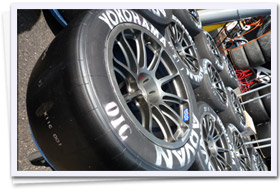The Super GT series enters its sixth season this year since its inception in 2005. It has been tremendously popular and more than 450 thousand people visited the Super GT race events last year and it's fair to say that the series is by far the most attractive category in Japanese motor sport scene. Among its popular fixtures, the jewels in the crown are the Fuji round during the Golden Week holidays in May and the long distance race at Suzuka Circuit in the end of summer vacation in August.
This year's series consist of eight rounds. It is a pity that Autopolis in Kyushu was dropped from the calendar, but the Super GT visits all other international race tracks in mainland Japan, such as Fuji, Suzuka, Okayama, Sugo and Motegi. In addition to them, the Malaysian round at Sepang Circuit keeps its slot in June, which has a long tradition since the days of the preceding Japanese GT Championship series.
The most notable new addition to the 2010 calender is a special round, "Super GT & Formula Nippon Fuji Sprint Cup 2010", held at Fuji in November after the championship is concluded in late October. This is a collaboration of Super GT and Formula Nippon, the pinnacles of touring car and formula races in Japan, and each will have approximately 100km long sprint race in one event, which is a fresh approach.
In such a high profile race series, the ADVAN equipped teams are expected to perform even better than last year. Looking back the inaugural 2005 season of the Super GT series, ADVAN shod cars won both GT500 and GT300 classes in the very first race of the reborn series at Okayama International Circuit.
Kondo Racing enters a Nissan GT-R in GT500 class again. The team hired Hironobu Yasuda to partner with the retained ace driver, J.P.de Oliveira. It is still fresh in our minds that the team overwhelmingly scored their first win in homeland in the rainy season opener and contended the title last year. For the 2010 season, many expect their strong showing towards the long-cherished championship title.

@
[ADVAN TIRE INFORMATION]
In 2009, the ADVAN equipped GT300 class contenders dominated the top four places of the drivers' championship and seven places out of top ten of the point standings. Two teams among them fought the title until the final round and Racing Project Bandoh eventually won it. It looks almost certain that the GT300 class championship is to be contended between the reigning champion and other ADVAN shod teams which are aiming to snatch the title crown.
The ADVAN racing tire has been an established top performer in the Super
GT series. By making continuous progress, ADVAN's superior performance
fully shines in this most notable grand touring car race series in Japan.